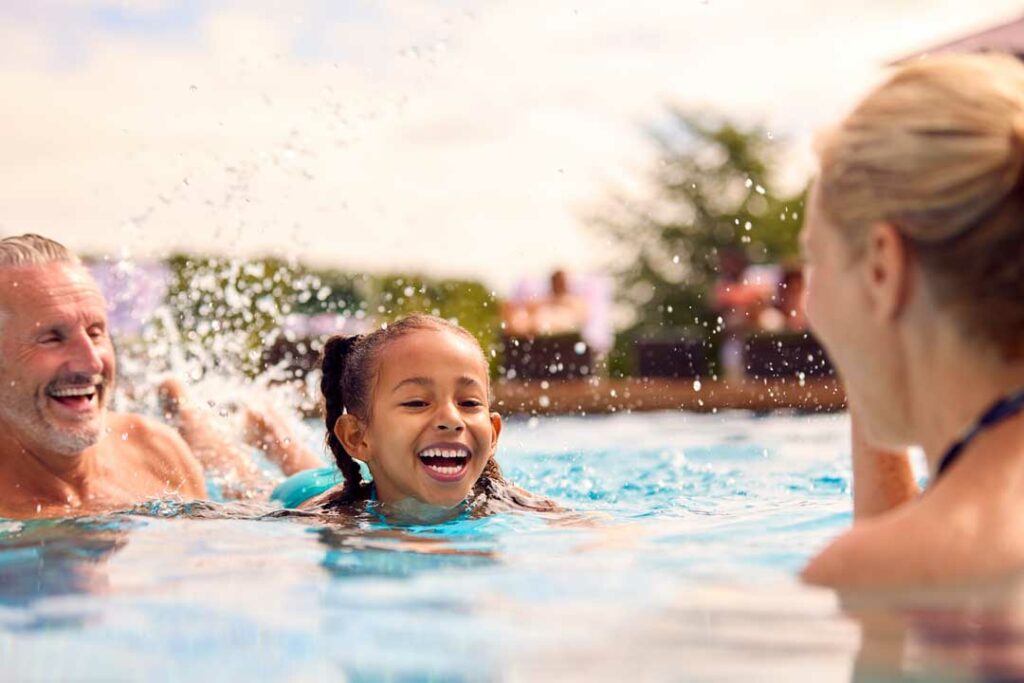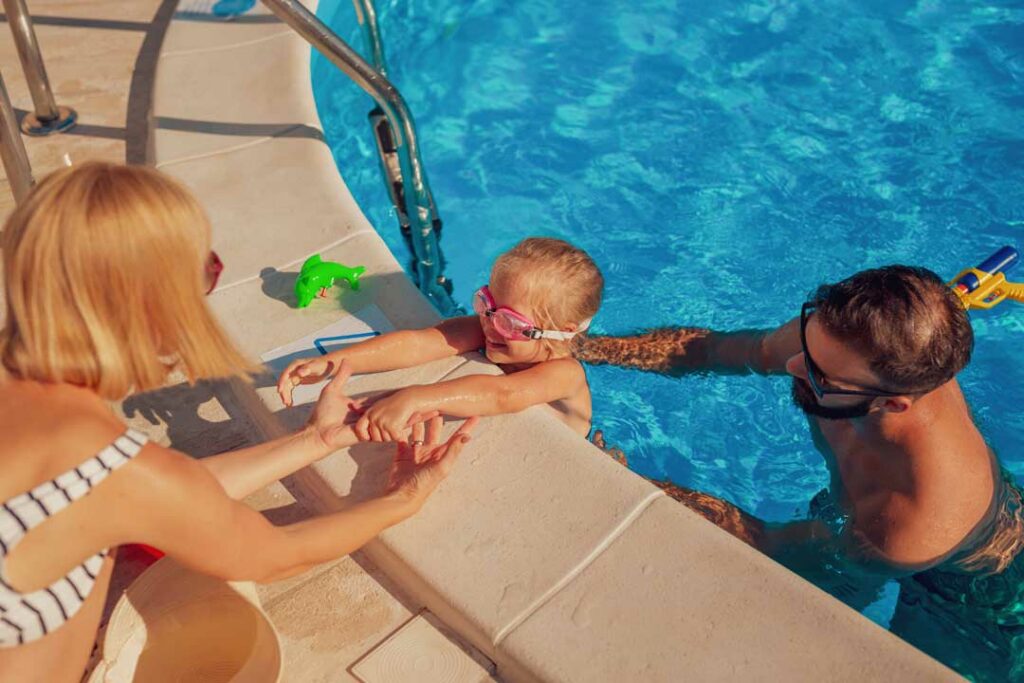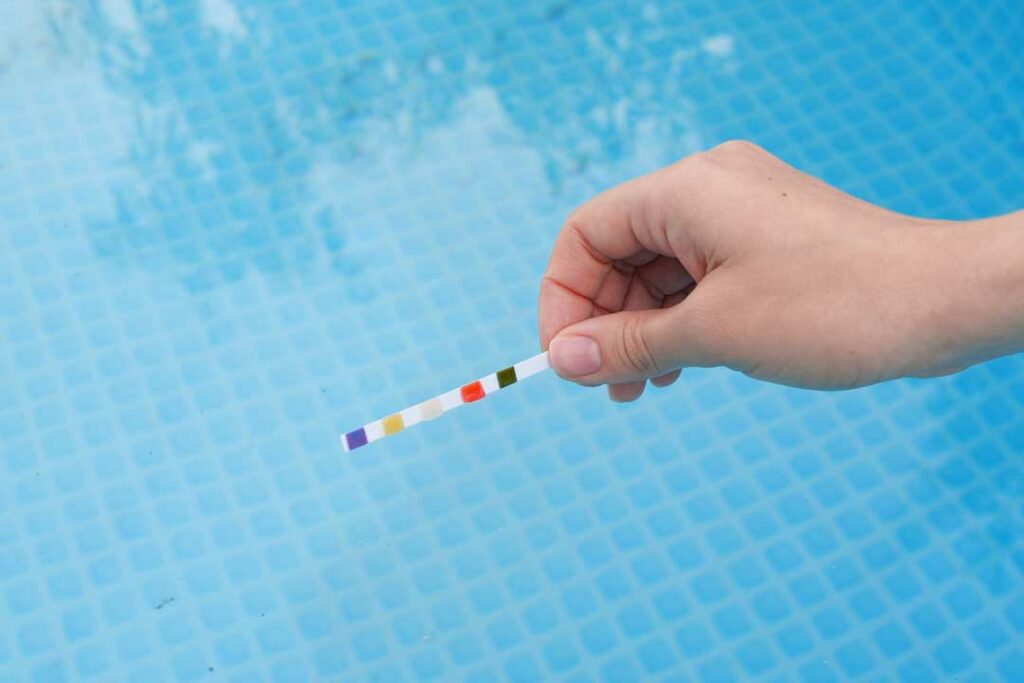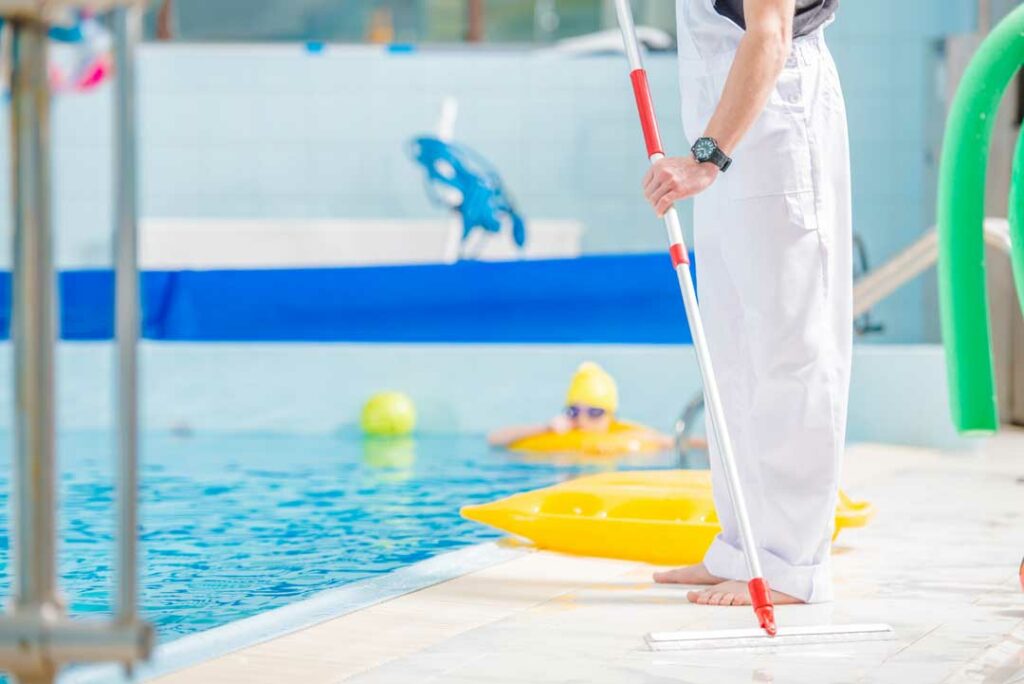Pool chemicals and lung health don’t always mix. Understanding how chlorine impacts your child’s breathing can help you swim smarter—not scarier.

Swimming pools provide an excellent way for families to stay active and cool during warmer months, but the chemicals used to keep water safe can also have effects on respiratory health.
Swim Smart: How to Balance Pool Fun and Lung Health
While chlorine and related disinfectants protect swimmers from harmful bacteria, they also produce byproducts that may irritate sensitive airways. Parents who are aware of these risks can take steps to reduce exposure and promote safer pool use.
Chlorine and Respiratory Irritation
Chlorine is the most common chemical used to disinfect pool water. When chlorine interacts with sweat, urine, and other organic matter introduced by swimmers, it forms compounds called chloramines.

These compounds are responsible for the distinct “pool smell” often associated with heavily used pools. Chloramines can cause eye irritation, but their impact on the lungs is often overlooked.
Breathing in chloramine vapors can trigger coughing, wheezing, and tightness in the chest. Children, who breathe more rapidly than adults, are more vulnerable to these effects.
Links to Asthma and Allergies
Several studies have suggested that frequent exposure to pool chemicals may be linked to the development or worsening of asthma and allergies. Indoor pools pose a greater risk because vapors concentrate in enclosed environments.

Researchers have found that children who spend more time in chlorinated pools sometimes show higher rates of respiratory symptoms compared to those who swim in saltwater pools or well-maintained outdoor facilities. While swimming remains a healthy form of exercise, it is worth balancing the benefits with awareness of potential risks.
Safe Practices
Good pool maintenance is essential for reducing chemical exposure. Properly balancing chlorine levels prevents the formation of excess chloramines.
Pool owners should regularly test water and ensure that pH levels remain stable. For those using indoor pools, ventilation plays a critical role. Adequate airflow reduces chemical buildup in the air and makes it more comfortable for the lungs.

Encouraging children to shower before swimming also reduces the amount of organic material introduced into the water.
Equipment Maintenance
The pool environment is influenced not just by chemicals but also by the condition of the equipment. Malfunctioning pumps, filters, or valves can lead to imbalanced chemical distribution. Routine inspections and timely fixes help preserve water quality and air safety.
For example, something as simple as a PVC ball valve replacement can prevent water flow problems that might otherwise affect chlorine dispersion and lead to uneven chemical concentrations.
Supporting Respiratory Health
Families with children who have asthma, allergies, or other lung conditions should take additional precautions. Limiting swimming time in heavily chlorinated indoor pools, choosing outdoor pools with good air circulation, and monitoring symptoms after swimming can make a difference.

Simple steps such as rinsing off after swimming and using saline sprays to clear nasal passages may also help reduce irritation.
Swimming offers many benefits for health and family bonding, but awareness of how pool chemicals affect the lungs allows parents to make informed choices. With careful maintenance and safe practices, families can enjoy the water while protecting respiratory health. For more information, look over the accompanying infographic.
Protecting Kids’ Lungs From Pool Chemicals: Health and Safety Tips
Swimming offers countless benefits, but understanding the connection between pool chemicals and lung health helps families make safer choices. With proper maintenance, improved ventilation, and smart habits, the risks can be minimized without sacrificing fun.
By staying aware of signs of respiratory irritation and choosing pools with good air quality, parents can protect their children’s lungs while still enjoying quality family time in the water. Safer swimming is possible—with the right knowledge and preparation.

Jessi is the creative mind behind The Coffee Mom, a popular blog that combines parenting advice, travel tips, and a love for all things Disney. As a trusted Disney influencer and passionate storyteller, Jessi’s authentic insights and relatable content resonate with readers worldwide.



